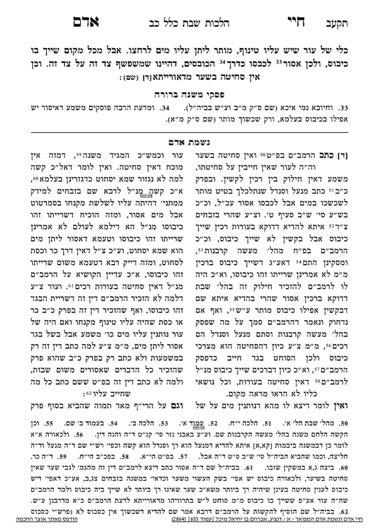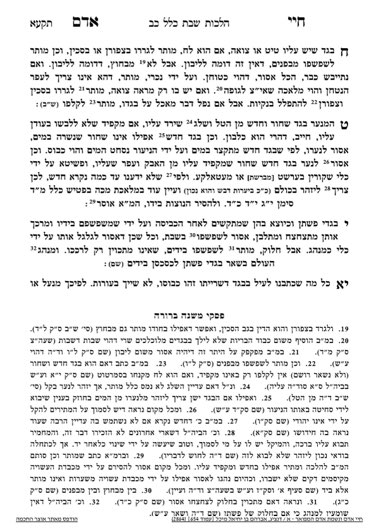- Mideoraysa, there is no concern for sechita in hair, but there is an issur miderabanan.
- However, there is no issur of simply soaking hair.
- There is an issue squeezing and soaking a garment made of hair. We will discuss the details of this issur in the upcoming shiur, be’ezras Hashem.

We are at the end of siman 11, where the Chayei Adam writes that sechita and melabein do not apply to leather nor to hair. Thus, the same way it is muttar to soak leather, it is muttar to soak hair, and the same way we are not concerned about the issur of sechita by leather, we are not concerned for it by hair. We did learn that the issur of rubbing a garment against itself applies to leather, so it should apply to hair as well.
The Chayei Adam’s language is that there is no concern mideoraysa of sechita on hair, which would imply that there is a concern for sechita miderabanan. (The Rambam’s wording is also that one is not chayav for sechita on hair, which implies that there is an issur miderabanan.)
The Chayei Adam’s order of presentation seems to be the opposite of the Rambam. The Rambam writes that there is no concern of sechita on hair, and similarly there is no concern of sechita on leather.The Magid Mishneh explains that the Rambam begins in the opposite direction because there is a Gemara which indicates that there is no issur of sechita in hair, but as we will see, no clear gemara which talks about sechita on leather. The Gemara is discussing a woman who is giving birth, which is considered sakanas nefashos. If there is an immediate emergency, one must do anything they can to save her life and disregard any melacha concerns. However, if there is sakana but no acute danger, one should try to minimize melacha. The Gemara gives the example of a woman in labor, where most of the labor process is not an acute sakanas nefashos. The Gemara says that if one needs to transport items for the woman through a reshus harabbim, such as oil, it is muttar to transport them, but assuming it is not acute, one should try to find a way to minimize the melacha involved. The Gemara says that regarding the oil, a friend should soak the oil into her hair, travel through the reshus harabbim, and squeeze it out of her hair for the woman giving birth. The Gemara asks why there is no issue of sechita, and the Gemara answers that there is no issur of sechita on hair. The implication is that in this case, it is muttar because of the sakana; without the sakana element, it would be assur miderabanan. Thus, the Rambam begins by discussing hair, because there is a source in the Gemara for it.
The Magid Mishneh does not give a source for how we know there is no issur of sechita by leather, and the Biur Halacha and Chochmas Adam grapple with finding a source for it. We will discuss this point further in the upcoming shiur, be’ezras Hashem.
Summary
Mideoraysa, there is no concern for sechita in hair, but there is an issur miderabanan.
However, there is no issur of simply soaking hair.
Similarly, it is muttar to soak leather.



